 To enhance service speed and avoid tariff delays, we've opened a US warehouse. All US orders ship directly from our US facility.
To enhance service speed and avoid tariff delays, we've opened a US warehouse. All US orders ship directly from our US facility.
| Cat. No. | Product Name | Field of Application | Chemical Structure |
|---|---|---|---|
| DC32972 | H2DCFDA Featured |
H2DCFDA is a fluorescent cell permeabl ROS indicator.
More description
|
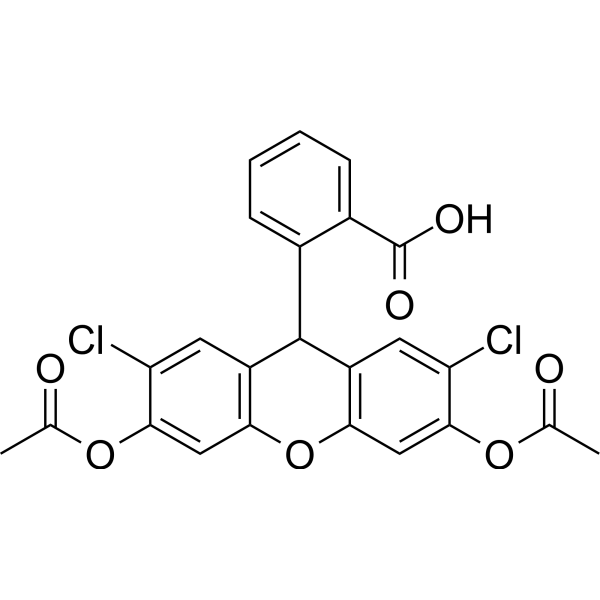
|
| DC9797 | CLR1501 Featured |
CLR1501 is a synthetic analogs of the tumor-targeting agent alkylphosphocholine (APC), which is specifically attracted to cancer cells.
More description
|

|
| DC9803 | CMP8 Featured |
CMP8 is a high-affinity ligand that binds only to mutant ERLBD.
More description
|
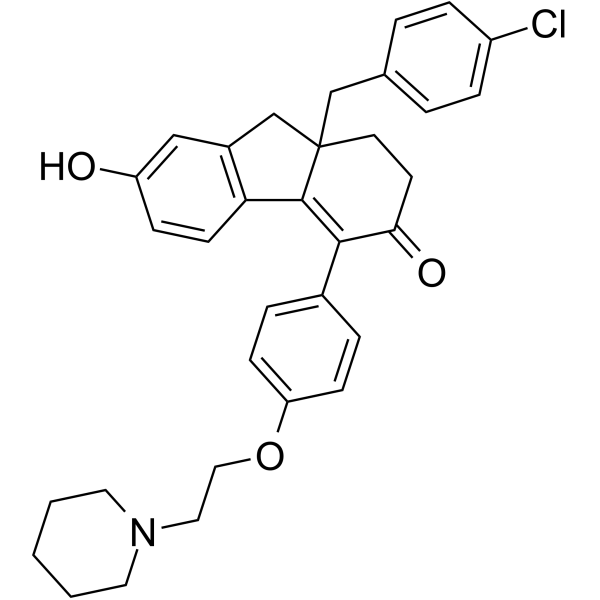
|
| DC40144 | TTA-A2 Featured |
TTA-A2 is a potent, selective and orally active t-type voltage gated calcium?channel antagonist with reduced pregnane X receptor (PXR) activation. TTA-A2 is equally potent against the Cav3.1 (a1G) and Cav3.2 (a1H) channels with IC50 values of 89 nM and 92 nM, respectively, at -80 and -100 mV holding potentials. TTA-A2 can be used for the research of a variety of human neurological diseases, including sleep disorders and epilepsy.
More description
|
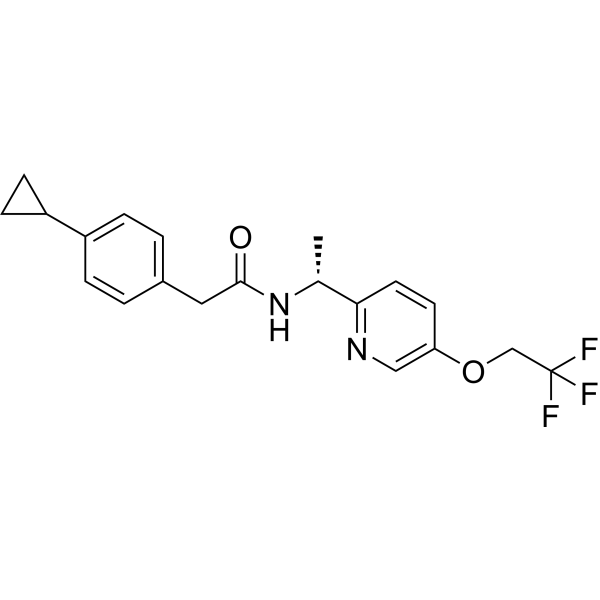
|
| DC67637 | (1R)-1-[5-(2,2,2-trifluoroethoxy)-2-pyridyl]ethanamine Featured |
-1-[5-(2,2,2-trifluoroethoxy)-2-pyridyl]ethanamine.gif)
|
|
| DC67636 | 2-(4-Cyclopropylphenyl)acetic acid Featured |
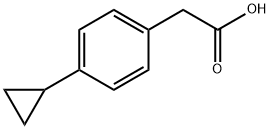
|
|
| DC67635 | (S)-GSK-F1 Featured |
(S)-GSK-F1 (Compound 28) is an inhibitor for type III phosphatidylinositol 4-kinase α (PI4KIIIα). (S)-GSK-F1 inhibits PI4Kα, PI4Kβ, PI4Kγ, PI3Kα, PI3Kβ and PI3Kδ with pIC50 of 8.3, 6.0, 5.6, 5.6, 5.1 and 5.6, respectively. (S)-GSK-F1 exhibits anti-hepatitis C virus (HCV) activity through inhibition of HCV replication. (S)-GSK-F1 exhibits moderate pharmacokinetic characters in rat model.
More description
|
-GSK-F1.gif)
|
| DC67634 | 2,5-dimethylthiophen-3-ylboronic acid Featured |
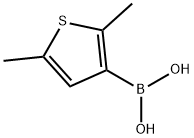
|
|
| DC28976 | Dizocilpine free base Featured |
Dizocilpine, a potent anticonvulsant, is a selective and non-competitive NMDA receptor antagonist, with a Kd of 37.2 nM in rat brain membranes. Dizocilpine acts by binding to a site located within the NMDA associated ion channel and thus prevents Ca2+ flux.
More description
|
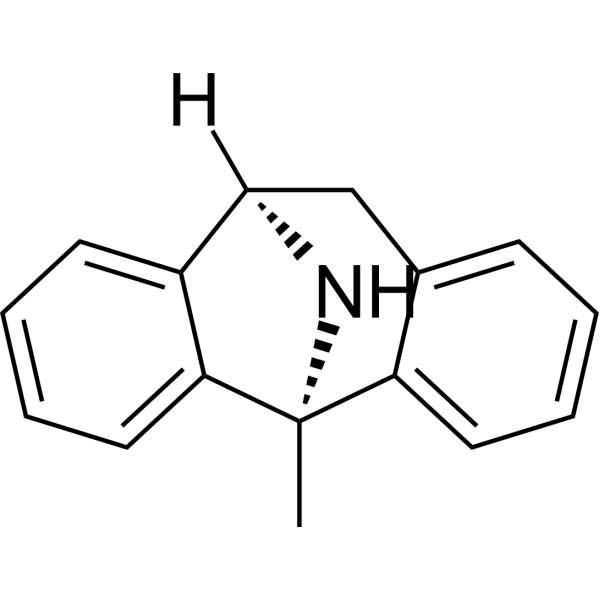
|
| DC4128 | Ivacaftor (VX-770) Featured |
Ivacaftor (VX-770, Kalydeco) is a potentiator of CFTR targeting G551D-CFTR and F508del-CFTR with EC50 of 100 nM and 25 nM, respectively.
More description
|
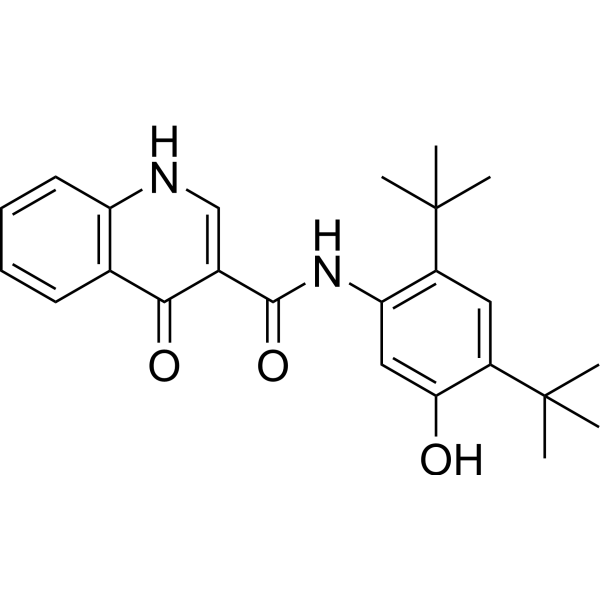
|
| DC77410 | BMS-986449 Featured |
BMS-986449 is a CELMoD molecular glue and an IKZF2/IKZF4 degrader. BMS-986449 targets the degradation of transcription factors Helios (IKZF2) and Eos (IKZF4) in regulatory T (Treg) cells. BMS-986449 redirects the E3 ubiquitin ligase Cereblon to induce the degradation of Helios and Eos, reprogramming Treg cells and enhancing antitumor immunity. BMS-986449 is promising for research of advanced solid tumors.
More description
|
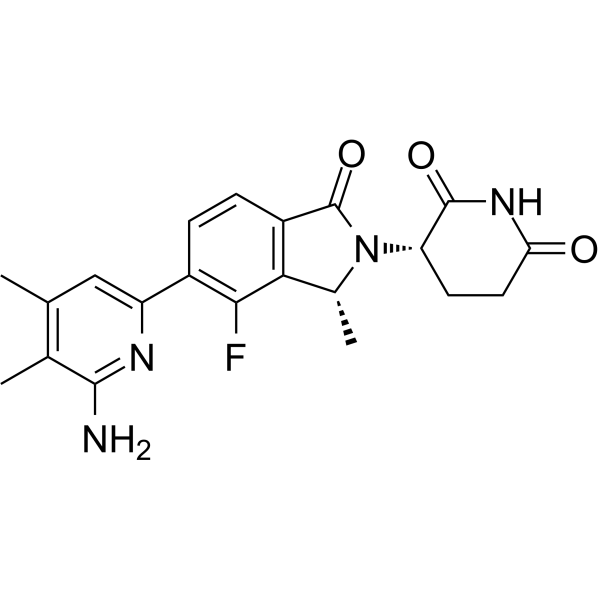
|
| DC10670 | CNQX Featured |
CNQX is a potent AMPA/kainate receptor antagonist. Also antagonist at glycine modulatory site on NMDA receptor complex.
More description
|
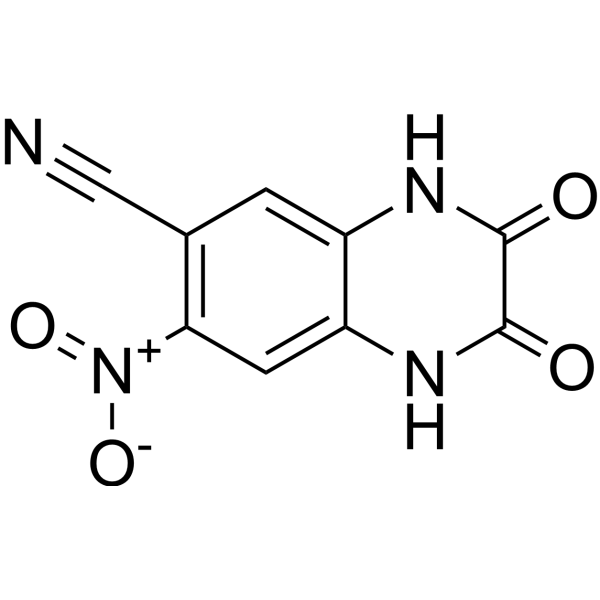
|
| DC9341 | Naspm Featured |
Naspm(1-Naphthylacetyl spermine) is a potent and selective Ca2+ permeable AMPA receptor(Ca-perm AMPAR) blocker.
IC50 value:
Target: CP-AMPAR blocker
Naspm is a selective blocker of Ca(2+)-permeable GluA2-lacking AMPA receptors, reduced MNNG-induced CA1
More description
|
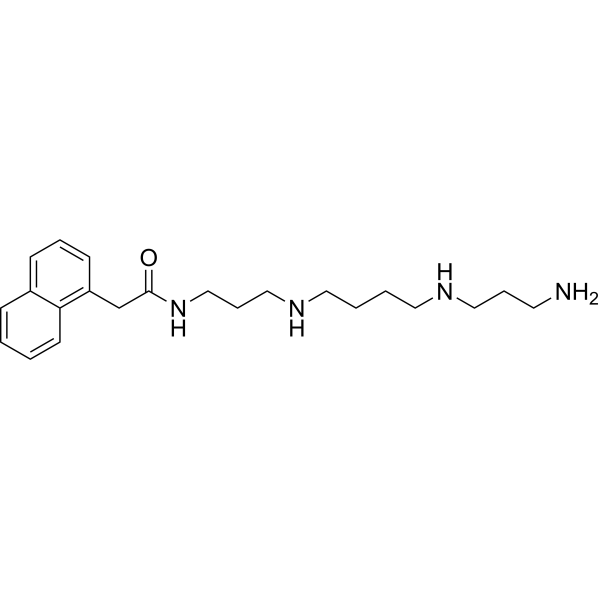
|
| DC7531 | Tezacaftor(VX661) Featured |
Tezacaftor(VX661) is a second F508del CFTR corrector and is believed to help CFTR protein reach the cell surface.
More description
|

|
| DC22591 | BMS-690514 |
A potent pan HER/VEGFR inhibitor with IC50 of 5/20/60/50 nM for EGFR/HER2/ERBB4/VEGFR2 respectively.
More description
|
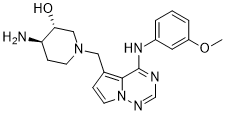
|
| DC24126 | Triptorelin Featured |
Triptorelin is a synthetic decapeptide agonist analog of luteinizing hormone releasing hormone (LHRH), shows greater potency than endogenous LHRH, triptorelin reversibly represses gonadotropin secretion..
More description
|

|
| DC60537 | C18 NC-TNP Featured |
NC-TNP (noncationic thiourea lipids nanoparticles) could compress mRNA by strong hydrogen bonds interaction between thiourea groups of NC-TNP and the phosphate groups of mRNA. NC-TNP could escape the recycling pathway to inhibit the egress of internalized nanoparticles from the intracellular compartment to the extracellular milieu. NC-TNP-encapsulated mRNA shows higher gene transfection efficiency in vitro and in vivo than mRNA-LNP formulation. NC-TNP also shows spleen targeting delivery ability with higher accumulation ratio (spleen/liver), compared with traditional LNP.The C18 non-cationic thiourea lipid self-assembles into ~100 nm nanoparticles with neutral surface charge, utilizing strong hydrogen bonding between its thiourea groups and mRNA phosphate groups for efficient mRNA complexation. This delivery system demonstrates significantly enhanced EGFP expression efficiency—2.3-fold higher than standard C6/C12 formulations—in DC2.4, B16, and 4T1 cells, while sustaining luciferase activity for over 20 days post-subcutaneous injection. It exhibits exceptional stability, maintaining >94% mRNA integrity and <10% particle size variation after 30-day lyophilized storage. Importantly, the nanoparticles show pronounced spleen-targeting capability with 20-fold greater accumulation in the spleen versus liver, effectively activating twice the level of antigen-specific CD8⁺ T cells. Critically, the system avoids cationic lipid-associated toxicity, inducing no detectable IL-6/CXCL10 inflammation and causing no histopathological damage in cardiac or splenic tissues, thus establishing a novel high-efficacy, low-toxicity mRNA delivery platform.
More description
|
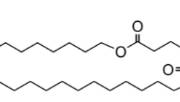
|
| DC10238 | Fluoxymesterone Featured |
Fluoxymesterone is an Androgen. The mechanism of action of fluoxymesterone is as an Androgen Receptor Agonist.
More description
|

|
| DC67631 | BHEM-Cholesterol, Iodide Featured |
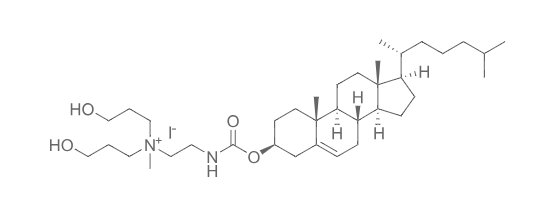
|
|
| DC67630 | BHEM-Cholesterol, bromide Featured |
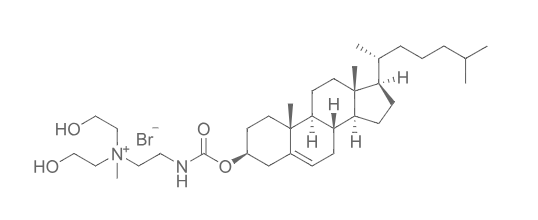
|
|
| DC67629 | BHE-Cholesterol Featured |
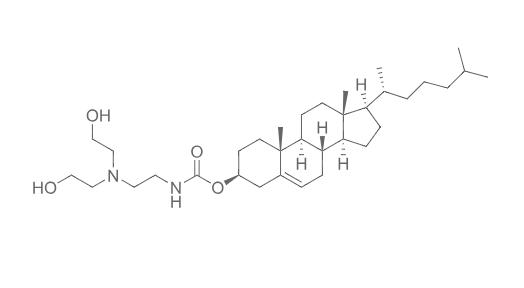
|
|
| DCG-002 | β-Sitosterol Featured |
β-Sitosterol is orally active. Beta-Sitosterol exhibits multiple activities, including anti-inflammatory, anticancer, antioxidant, antimicrobial, antidiabetic, antioxidant enzyme, and analgesic. Beta-Sitosterol inhibits inflammation and impaired adipogenesis in bovine mammary epithelial cells by reducing levels of ROS, TNF-α, IL-1β, and NF-κB p65 and restoring the activity of the HIF-1α/mTOR signaling pathway. Beta-Sitosterol induces apoptosis in cancer cells through ROS-mediated mitochondrial dysregulation and p53 activation. Beta-Sitosterol exerts its anticancer effects in cancer cells by activating caspase-3, caspase-8, and caspase-9, mediating PARP inactivation, MMP loss, altered Bcl-2-Bax ratio, and cytochrome c release. Beta-Sitosterol modulates macrophage polarization and reduces rheumatoid inflammation in mice. Beta-Sitosterol inhibits tumor growth in multiple mouse cancer models. Beta-Sitosterol can be used in the research of arthritis, lung cancer, breast cancer and other cancers, diabetes, etc.
More description
|
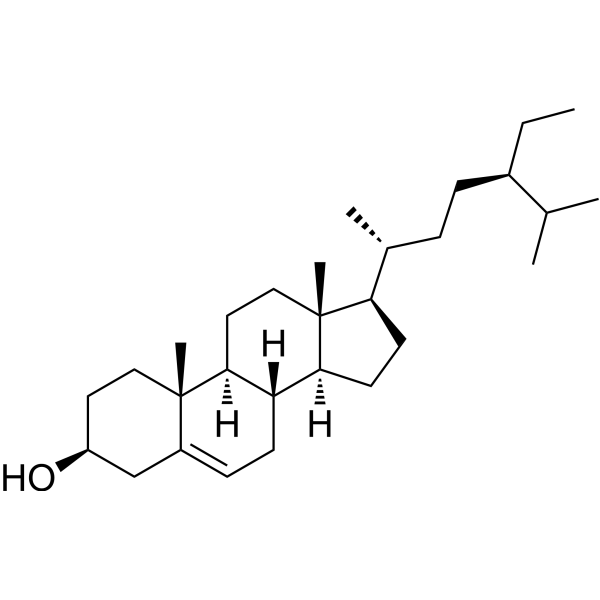
|
| DCD-042 | Stigmasterol Featured |
Stigmasterol is an orally acitve, immunomodulatory agent with anti-inflammatory and neuroprotective effect, as well as able to cross the blood-brain barrier. Stigmasterol activates AMPK, which in turn inhibits NF-κB and NLRP3 signaling pathways, reduces microglia-mediated neuroinflammation, and alleviates cognitive impairment and Alzheimer's disease. Stigmasterol regulates M1/M2 polarization of microglia through the TLR4/ NF-κB pathway, thereby reducing neuropathic pain. Stigmasterol can be used for neurodegenerative diseases, inflammatory diseases, and pain management, among others.
More description
|
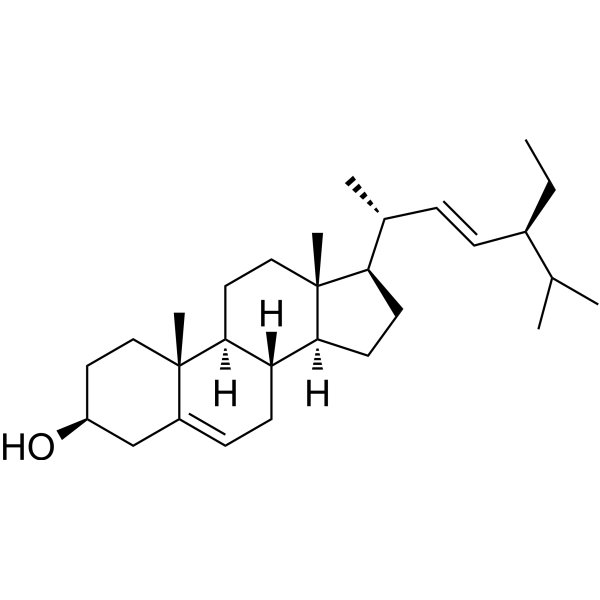
|
| DC36834 | Sitostanol Featured |
Sitostanol is a saturated sterol found in a variety of plants, including corn, wheat, and rice and reduces cholesterol uptake in rats and rabbits.
More description
|
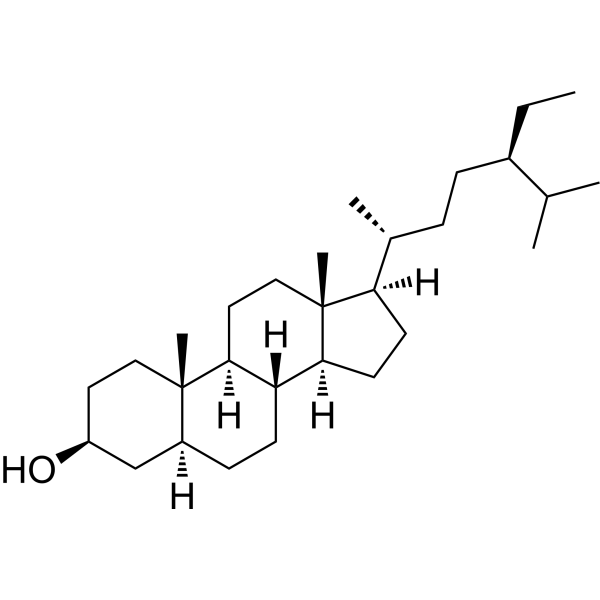
|
| DC66108 | DC-cholesterol Featured |
DC-cholesterol(3β-[N-(N′,N′-Dimethylaminoethyl)carbamoyl]cholesterol), a lipid, has been investigated in cancer gene therapy and vaccine delivery system.
More description
|
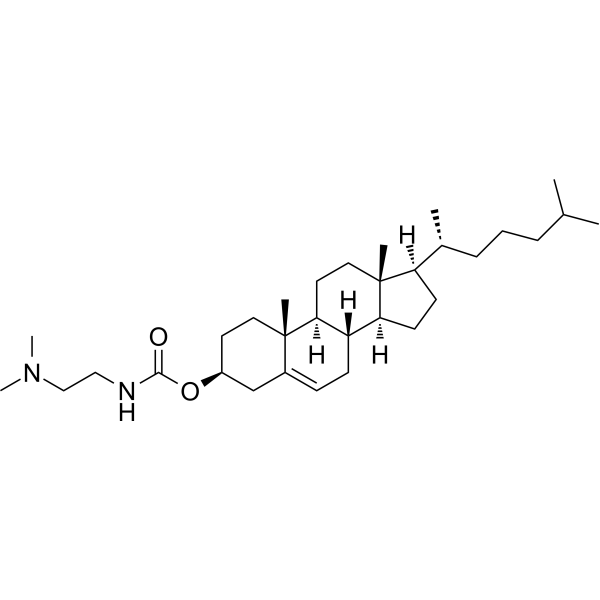
|
| DC67627 | CHEMS-PEG-5000 Featured |
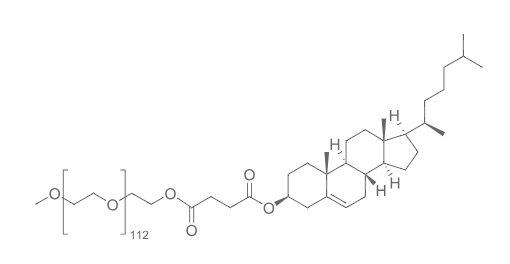
|
|
| DC67626 | CHEMS-PEG-2000 Featured |
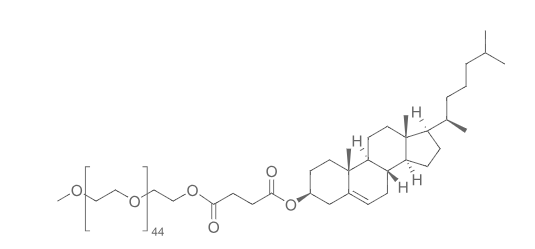
|
|
| DC67625 | CHEMS Featured |
CHEMS is the analytical standard of Cholesteryl hemisuccinate. This product is intended for research and analytical applications. Cholesteryl hemisuccinate is a with hepatoprotective an anticancer activity. Cholesteryl hemisuccinate inhibits Acetaminophen (AAP, HY-66005) hepatotoxicity, and prevents AAP-induced hepatic apoptosis and necrosis. Cholesteryl hemisuccinate inhibits DNA polymerase and DNA topoisomerase to inhibit DNA replication and repair and cell division. Thus, Cholesteryl hemisuccinate inhibits tumor growth.
More description
|
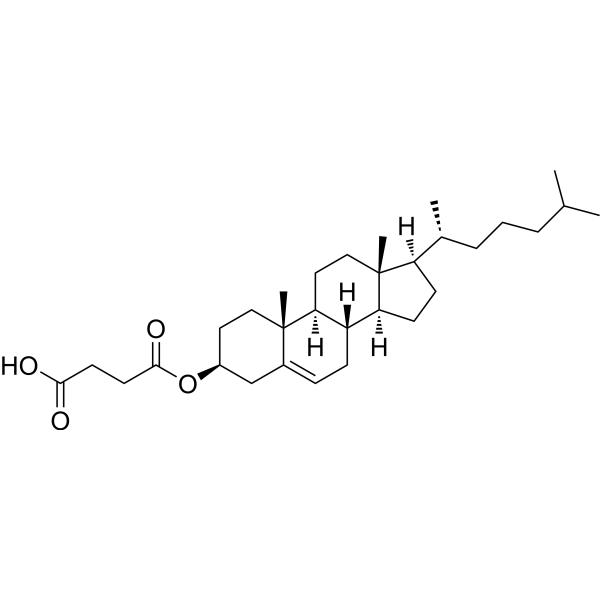
|
| DC67624 | SCS Featured |
SCS is an orally active cholesterol biosynthesis agonist that targets NPC2. It activates SREBP2 by competitively binding to NPC2, thereby promoting cholesterol synthesis (EC50 = 50 μM).
More description
|
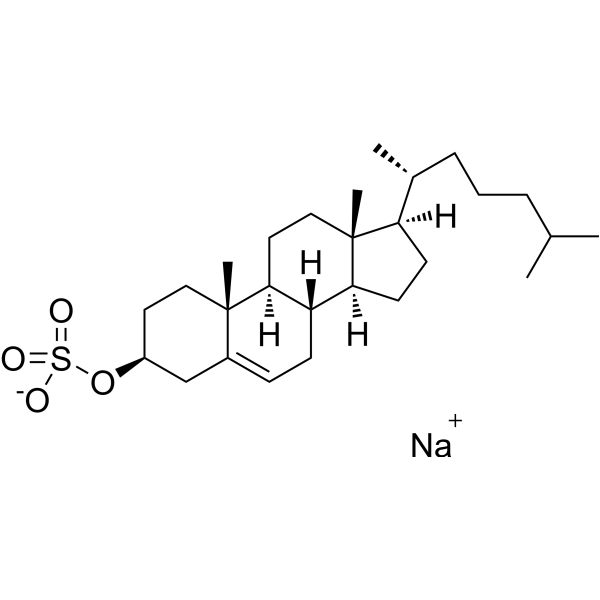
|
| DC67621 | DDPC Featured |
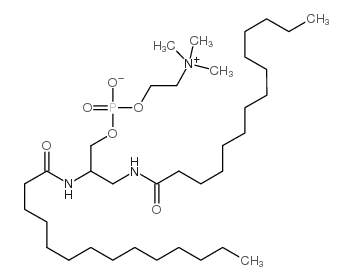
|